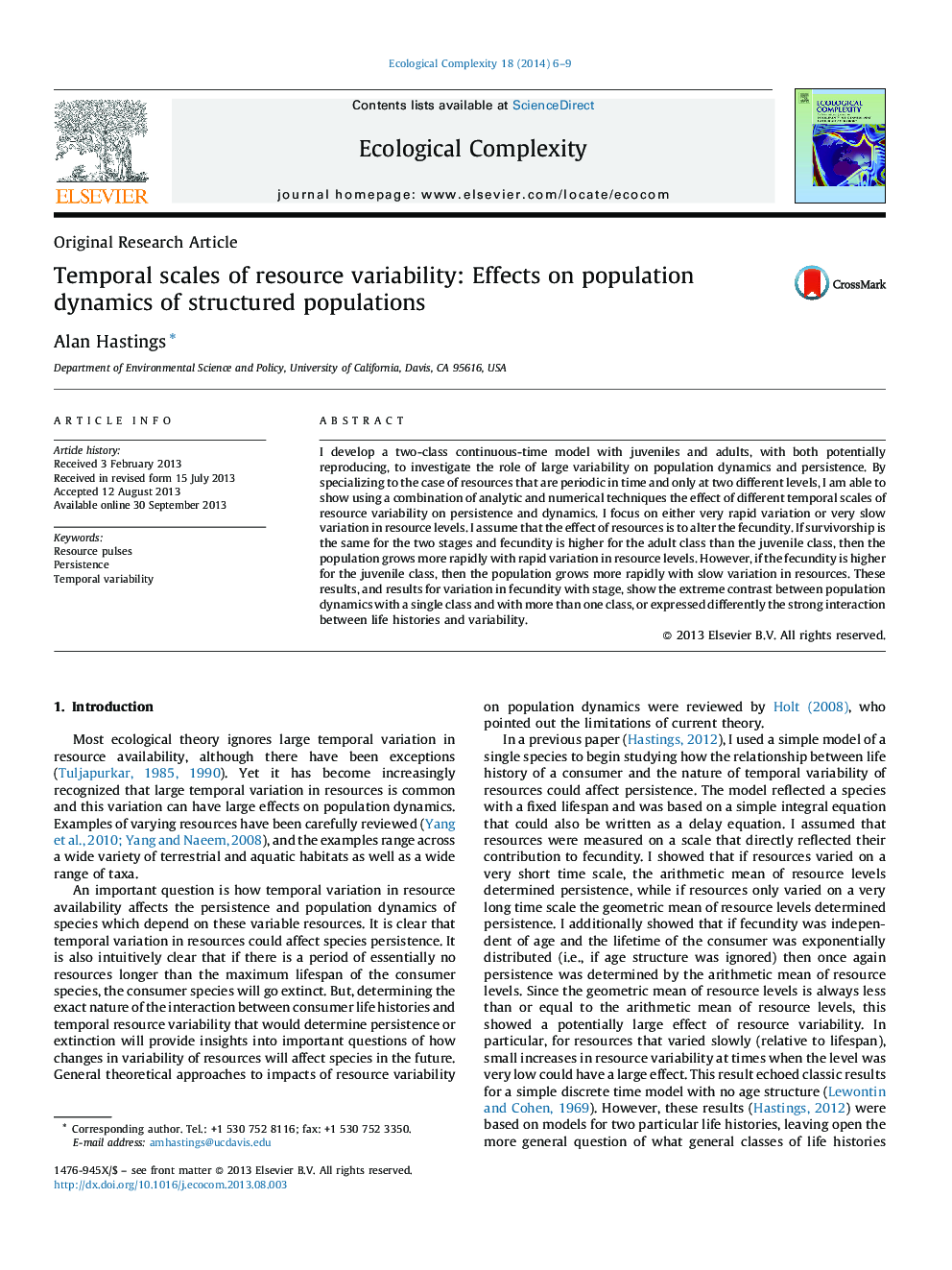| Article ID | Journal | Published Year | Pages | File Type |
|---|---|---|---|---|
| 4372451 | Ecological Complexity | 2014 | 4 Pages |
Abstract
I develop a two-class continuous-time model with juveniles and adults, with both potentially reproducing, to investigate the role of large variability on population dynamics and persistence. By specializing to the case of resources that are periodic in time and only at two different levels, I am able to show using a combination of analytic and numerical techniques the effect of different temporal scales of resource variability on persistence and dynamics. I focus on either very rapid variation or very slow variation in resource levels. I assume that the effect of resources is to alter the fecundity. If survivorship is the same for the two stages and fecundity is higher for the adult class than the juvenile class, then the population grows more rapidly with rapid variation in resource levels. However, if the fecundity is higher for the juvenile class, then the population grows more rapidly with slow variation in resources. These results, and results for variation in fecundity with stage, show the extreme contrast between population dynamics with a single class and with more than one class, or expressed differently the strong interaction between life histories and variability.
Related Topics
Life Sciences
Agricultural and Biological Sciences
Ecology, Evolution, Behavior and Systematics
Authors
Alan Hastings,
